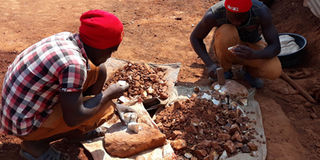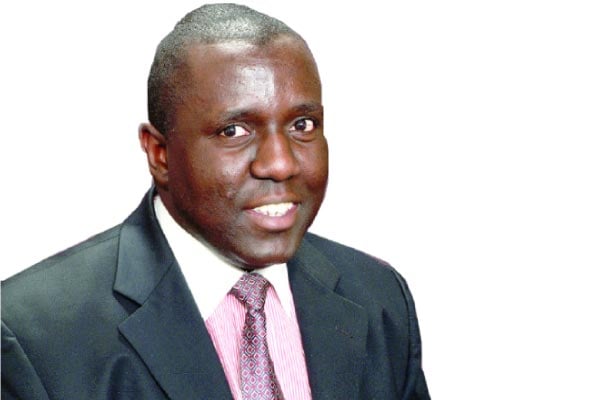Prime
Gold miners weigh new technology options

Groups of youth work in twos or more while extracting gold in Moroto. PHOTOS | HALIMA ABDALLAH
What you need to know:
- With support from the Global Environment Facility, a deliberate strategy to eliminate the use of mercury at the gold mines through alternative gold mining technology is being implemented.
The cost of accessing alternative and non-mercury substance emission gold extraction technology stands in the way of the complete elimination of the life and environment threats posed by toxic atmospheric emissions.
While Uganda’s status as a signatory to the Minamata Convention on Mercury that banned mercury substance emissions dates back to 2013 when it was signed, the total elimination of mercury substance at the different gold mines is yet to take shape.
The Convention targets the protection of human life and the environment from the toxic mercury emissions released into the atmosphere.
At Kitumbi–Kayonza gold mines in Kassanda District, both the artisanal miners and members of the community are still faced with the mercury substance emission risk.
Mr Fazil Lubega, the chairperson of Mugobwa A Village in Kitumbi Sub-county, with an estimated 6,000 residents including the miners, is worried about the danger this poses.
“We are worried that most of our water sources at the swamps and water streams are already contaminated with the mercury substance. The community in this area has no clean and safe water. We depend on the water from the sources that might be already polluted with the mercury substance,” he told a stakeholders meeting last Thursday.
Artisanal mining involves the use of rudimentary tools such as hoes, spades, shovels, axes and other small man-crafted objects which are valued low.
Ms Agnes Nakawesi, an artisanal gold miner at Kitumbi mines, said their lives are at risk if they fail to get alternative technology that does not need the mercury substance as a catalyst for the gold extraction process.
“We still come into contact with the mercury substance as we process the gold ore before it turns to gold. Both the government and other stakeholders have indeed been sensitising us about the dangers but the alternative technologies are not yet here,” she said.
Statistics from the National Environment Management Authority (Nema) show that the initial assessments conducted in 2018 indicated that over 30,000kgs of mercury mineral deposits were going into the atmosphere each year. Studies also revealed that artisanal miners were contributing to the accumulated mercury emissions into the atmosphere at their respective gold mines.
“The affluent discharges that contain mercury deposits are toxic and a danger to human health and the environment. When mercury gets to the human body, it affects the nervous system among other body organs,” Ms Ann Nakafeero, an environment officer at Nema, said.
With support from the Global Environment Facility, a deliberate strategy to eliminate the use of mercury at the gold mines through alternative gold mining technology is being implemented.
Under the Planet Gold project, in partnership with Nema and the mines department at the Ministry of Energy, artisanal miners are the target for the clean gold supply chain. The elimination of mercury from the more than 11 gold mines across the country is tied to alternative mining technology.
“Uganda is part of the 23 countries that are implementing a project targeting the mercury-free gold supply chain. The alternative mining technologies now available in countries such as Kenya, South Africa and the Philippines are the target in the ongoing sensitisation of the artisanal miners,” Ms Lynn Gitu, a project manager at Planet Gold, said.





